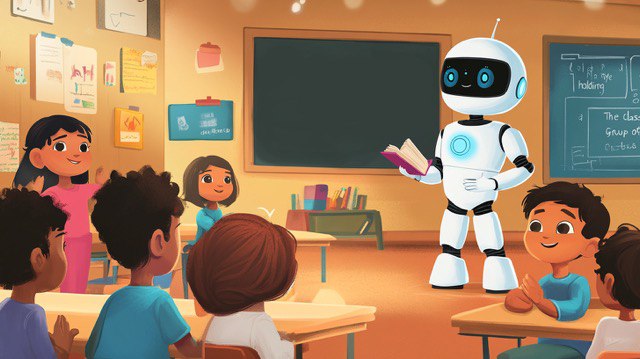
The Use of AI in Education: Examples
Artificial intelligence is increasingly becoming one of the most talked-about topics. Its application spans diverse areas, and the educational sector is no exception. AI is already capable of radically changing the education system. Traditional education methods are supplemented with new approaches, opening many opportunities for students and teachers alike.
In the foreseeable future, the question of replacing live teaching with robots is not on the table, as education consists not only of information transfer but also of interacting with students on emotional and personal levels. However, AI technologies are already helping teachers organize the learning process. In this article, we will provide examples of AI in education to help you understand the importance of its integration into teaching. Is It Possible Although neural networks are still developing, AI tools are gradually being introduced into the education system. As of today, there is no legislative framework in Russia for the integration of neural networks in education. Such actions are only recommended. However, it is technically possible to use AI for drafting curricula, conducting presentations, automatic grading, and adapting educational materials to the initial knowledge level and capabilities of each student. Examples AI integration in general educational institutions in Russia is currently not on the agenda. However, digital technologies are actively used in the country.
Examples of neural network applications for education include:
- Neural networks helping students write reports, essays, compositions;
- Automating routine tasks for teachers—checking homework, evaluating tests, creating lesson plans;
- Chatbots and virtual assistants in online schools;
- Interactive tutors and online translators;
- Educational online games and simulators;
- Computer 3D modeling of reality;
- Assisting students with disabilities in mastering materials;
- Self-education on virtual platforms.
AI technologies are also integrated into the administration of educational institutions. Automatic systems track student attendance, monitor overall performance, transmit data about classroom conditions, air temperature, lighting, and the operability of alert systems. Interesting Facts Artificial intelligence in education is no longer a rarity but a widespread technology. One of the first steps in this field was taken back in the 1980s when programs for automated learning were developed. Now, adaptive educational systems can significantly reduce the time required to study materials as they adjust to each learner’s pace.
While Europe and the USA are contemplating the integration of IT advancements into the general education system, in China, AI is used to analyze not only behavior but even the emotional state of students during classes. This allows teachers to get a more complete picture of each student’s performance and engagement.
Another interesting fact—some educational online platforms use AI to select personalized courses and assignments based on test results, making the learning process more efficient. According to experts, the use of AI in education will increase tenfold in the coming decades, leading to significant changes in teaching approaches. Conclusion Educational robots are no longer just characters from science fiction movies. AI can already create personalized educational materials, automate test assessments, draft lesson plans, assist teachers in conducting classes, and help students master new topics. While AI cannot replace a teacher, it is ready to support the educational process and increase the efficiency of learning.
However, it is essential to remember that AI technologies require thoughtful application. The interaction between teachers and students remains central to the learning process, and artificial intelligence is merely a tool that helps realize the potential for knowledge development. Time will tell how deeply neural networks will be integrated into education. But it is already safe to say that AI’s influence will lead to significant improvements in the educational sector.

